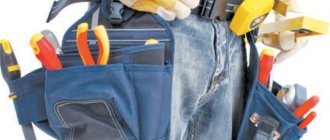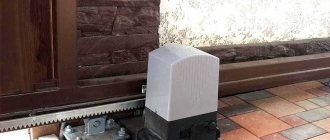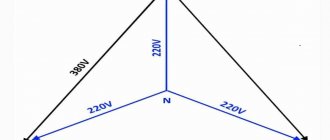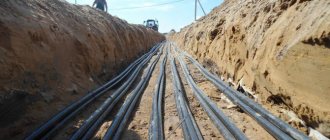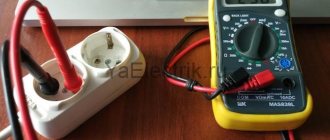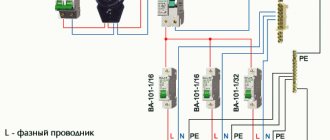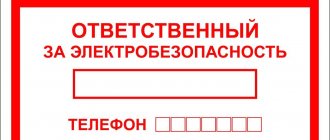Not a single competent master can do without special equipment. An electrician is a professional who troubleshoots electrical networks, appliances, and also carries out installation work. To do the job efficiently, you need the necessary tools for an electrician.
This article will review various electrical installation tools aimed at professionals and beginners. Recommendations for its use by novice electricians will also be given. Now let's study the list of tools that an electrician may have for repairing and servicing electrical equipment.
Dielectric gloves
For any work on live circuits, it is necessary to use rubber dielectric gloves. Before use, they must be inspected for punctures, cuts and cracks.
You can purchase it in stores specializing in electrical goods and electrical equipment. It is necessary to check the quality of the material for thickness and strength. The easiest way to check is to fill the glove with air and press it with your hands. Air leakage from a filled glove is unacceptable.
Screwdrivers of different types and sizes
The most commonly used tools in work are screwdrivers of various types. They are necessary for tightening contact terminals, tightening screws and bolts, as well as when dismantling old equipment. It is best to purchase long insulated screwdrivers with a flathead and a Phillips slot, in two or three different sizes (depending on the specifics of the work being performed).
It would also be a good idea to purchase a universal set with various attachments. However, it is needed mainly for specific work and will be practically useless for novice electricians.
Various screwdrivers
A screwdriver is a handle with a metal rod that has inserts of different shapes and sizes at the end. The handle is made of high-strength plastic. The rod is made of high-strength steel. Handles are also made of wood. The diameter varies from 1 cm to 4 cm. The thinner the rod, the thinner the screwdriver handle. Every working electrician and every home undoubtedly has a set of these tools.
It is not possible to achieve the required tightening torques for screws and screws by hand.
There are several types of screwdrivers depending on the shape of the inserts. List of the main ones:
- "Minus". Has a straight slot. It can vary in width and thickness of the metal.
- Cross. Looks like a plus.
- Cross with additional guides. The tool spline has good depth and high torque. This type of screwdriver is often used in furniture assembly.
- In the form of a star. Used in electronics and assemblies, car repairs.
- In the form of an asterisk with a pin.
- Hexagon shaped model. Used when tightening washers with the same recesses.
- A modification that has a rod with a square at the end. Very rare and infrequently used.
- In the form of three petals. One of the complex and rare types of screwdrivers.
- Cross, having asymmetry. Using such a screwdriver allows you to achieve a strong tightening effect.
- Model with two pins. Most often, this type of screwdriver is used in parts related to elevator mechanisms and household appliances.
Additional Information! At home, a screwdriver can replace the expensive tool of a screwdriver. This will make your work faster and easier
Automation makes work easier
Screwdriver - ambulance
For many jobs, it will be much more convenient to use an indispensable tool - a screwdriver. In addition to its main purpose, it will help make holes in the walls of the shield or junction boxes. If the price of such a tool turns out to be too high, it can be replaced with a cordless screwdriver. A photo of the set is shown below.
It is recommended to purchase a complete set with all the necessary attachments, since during electrical installation work it is often difficult to access the necessary places.
Screwdriver
A screwdriver is a really quick helper. With the help of this tool, even a weak woman can cope with difficult installation or hole-making tasks. Such tools can be used remotely from the mains voltage, since it has two replaceable batteries.
You may be interested in Measuring the capacitance of capacitors
Included or separately is a set of bits that allows you to screw and unscrew screws for metal, wood, concrete and roofing. It is considered one of the professional tools for electrical installation. Convenient and easy to use.
Round nose pliers will help with bending wire strands in sockets
Pliers or pliers
Another fairly important hand tool for an electrician is pliers (or pliers). They can be used to tighten small nuts and also cut wires. Pliers must have solid insulated handles. No cuts or cracks are allowed.
In addition to pliers, specific tools such as round nose pliers or duckbill pliers may often be required. Both of these tools are shown in the following photos.
Platypuses differ from round-nose pliers only in the presence of a flat edge, thanks to which in some cases they completely replace pliers. The main purpose of these tools is to shape wire ends and complex bends.
Application of side cutters
To cut the wires evenly, side cutters (or wire cutters) are used. Thanks to the special sharpening of the cutting part, they provide a cut without compressing the ends of the wire. Experienced electricians often make do with wire cutters only, without using pliers at all. The photo below shows side cutters - a tool used for electrical installations and in the repair of household appliances.
Side cutters
Using side cutters you can make a high-quality cut. Nippers is their second common name. When biting, they form a smooth edge, because have the ability to compress the wire well.
There are single-hinged and double-hinged. The latter are much more convenient to use, because... When working, less effort is applied when pressing. The most resistant to impact are reinforced side cutters made from carbide metals. They also differ significantly in price.
Important. When choosing a side cutter, you should pay attention to ensure that there are no dents, nicks or other deformations on the blade.
Sometimes it is necessary to crimp the wiring
Nylon zip ties
Nylon ties of various sizes are widely used to connect multiple wires into bundles. They make it easy to secure the wires and make the installation clearer and more aesthetically pleasing.
The cross-section of the wires and their number should be taken into account, after which you can select the appropriate size of the tie. For a small number of wires, a wide tie will not work.
Tools for stripping wires
To clean wires from insulation, various tools are used: electrical knives or special devices for removing insulation. Knives are usually used by professionals. It is not recommended for beginners to use knives (and especially various cutters), since due to lack of experience, a cable core (or several cores of a multi-core cable) can easily be damaged, and this will reduce the reliability of the entire electrical installation being mounted. If funds do not allow you to buy a special tool for removing insulation, you can use an electrical knife with a non-sharp blade.
Next to it in the photo is a special tool for removing insulation, the range of which is now represented by a huge number of models of different price categories. Thanks to this choice, even a novice electrician will be able to choose an affordable and suitable tool.
Knives
So, a good electrician has several types of knives in his belt pockets. The first is a regular folding knife. It is used for various purposes - trimming, stripping, etc.
The main one is an electrical knife with a special blade shape.
In addition to its shape, its blade is sharpened on both sides, which allows you to strip wires in two directions - toward you and away from you.
Some types of electrical knives have a special heel at the end of the blade.
This knife allows you to cut the lumbar insulation of the wire without possible damage to the internal insulation of the wires.
The third type of knife that an electrician may have is a regular construction knife with replaceable blades. It can be used like a regular folding knife.
Wire Connection Tools
Screw terminal blocks are most often used to connect wires.
Recently, they have been replaced by sleeves used to connect wires or crimp their ends to protect them from damage. To install them on the ends of the wires, use a special tool - crimping pliers. They fit well into various sizes of such sleeves.
Wire end protection
To protect wire ends from damage, experienced electricians can use tin-lead tin plating (usually for stranded wire). In this case, the wire strands become a single whole and do not break off individually. Soldering irons of various capacities are used for tinning wires.
However, it is very difficult to tin the wires of large cross-section with a soldering iron; it is necessary to use a soldering bath. It belongs to special-purpose tools and, despite its affordability, is simply not sold in many stores. For this reason, solder baths are used exclusively by professionals or large companies.
Calipers
Vernier calipers have gained popularity both in everyday life and in construction work. It is considered a measuring instrument. Using this meter, you can accurately determine the external and internal diameters (in this case, wires).
Digital models are easier to use, but also more expensive
The measurement accuracy is very high. The device contains, in addition to two jaws that measure the internal and upper dimensions, there is another element that determines the depth (called a depth gauge).
Digital calipers have appeared, with which it has become even easier and faster to work. The most popular and affordable model, where readings are taken on a vernier scale.
For your information. In those models that already use a liquid crystal display, the price is much higher.
It's almost a piece of jewelry
Spanners
In some cases, when performing installation work, wrenches may be needed. Although there are many kits available for sale, electricians generally do not need them. You can limit yourself to purchasing an adjustable wrench. It is much lighter and replaces a whole set of keys of various sizes.
In addition to the frequently used tools listed, there are many different indicators and measuring instruments. Let's consider the most necessary of them.
Requirements for electrical installation tools
General requirements for electrical installation tools:
- serviceability of accessories;
- fitness for purpose;
- ease of use;
- compliance with the dimensions of parts and equipment being repaired.
Before operation, each technical unit undergoes visual control and inspection.
Universal products, such as pliers, assembly knives, screwdrivers, used at all stages of electrical installation, must have insulated handles.
Sledgehammers and hammers are made with a slightly convex, unbroken surface of the striker; handles are made of hard, elastic wooden material. The handles must be tightly and securely attached to the body. Accessories are checked for the presence of burrs, nicks, bumps, and irregularities.
Any malfunction could result in injury to the installer.
Electrical tools are subject to increased demands because they are a potential source of electric shock.
Hand accessories are made from electrical insulating material. The surface should not have chips or cracks.
When working with measuring instruments, check the integrity of the housing.
When working with electrical devices and measuring instruments, pay attention to the integrity of the housing and the connection of the cord to the power source and the device. Cracks and breaks are not allowed. The power cable is checked for signs of burning, heating, or chafing.
All units purchased are pre-tested. Marking indicating the date of inspection is required.
According to regulatory rules, electrical installation devices are verified at least once a year.
Indicator screwdrivers
Indicator screwdrivers (phase indicators) are used to check the presence of voltage in the network, as well as to determine the phase wire. Every electrician must have this tool. When you touch the phase wire, the signal lamp lights up; when you touch the neutral wire, the lamp does not light up. Before measuring, you must touch the sensor on the handle of the screwdriver with your finger or hand (usually it is located at its end). The photo below shows various indicator screwdrivers.
Hidden wiring indicators are also produced in a similar design. They are also necessary when troubleshooting wires that run inside wall decoration.
In addition to simple phase indicators in the form of screwdrivers, there are three-phase indicators. They have four terminals (three phase and one neutral). When the phase wires are connected correctly, the indicator disk rotates in the direction indicated by the arrow. Note that this device is specific and is used mainly by professionals when working with engines and other equipment powered by a three-phase network.
Tool types
An electrician's tools can be divided into main and auxiliary.
Also, tools can be divided by type of use: electrical - the electrician uses them to check networks, connect wires, install electrical devices, and installation - with the help of which the electrical network is laid and installed.
An electrician does not have many electrical tools and partings, but they should always be at hand.
Often, for this, electricians use special belts with pockets for tools.
This kit includes:
- Knives;
- Screwdriver Set;
- Pliers, pliers, wire cutters, stripper;
- Measuring instruments (multimeter, current clamp);
- Insulating materials.
When laying networks, as well as installing electrical equipment, in addition to the specified tools, an electrician may additionally need:
- Hammer with attachments (drills, crowns);
- Screwdriver;
- Wall chaser;
- Press key;
- Hammer;
- Electrical level, tape measure;
- Set of open-end and spanner wrenches;
- Tools for specific work conditions.
And these are just the tools and equipment that an electrician may need, but there are also consumables.
But for now we are only interested in tools and devices, as well as what they do.
Low voltage indication
To indicate low voltage (meaning mains voltage 220 V), INN-1 indicators are often used, which are two probes, one of which has a signal lamp installed. The probes are connected by wire. When they touch live wires, the lamp lights up.
Instead of such indicators, amateur electricians often use a signal lamp, which is a regular low-power incandescent lamp. Wires that act as probes are attached to its socket. However, this design poses a great danger: the lamp can be accidentally broken, but the filament is under mains voltage. In contrast to this solution, industrial indicators have a durable body and reliable insulation, so it is recommended to use them.
Multimeter
The most reliable instrument for measuring electrical circuits is a multimeter. Digital multimeters are now widely used. They allow you to measure voltage, current, and also have the ability to measure circuit resistance and its continuity with a sound alert. It is better for novice electricians to purchase an inexpensive model (they won’t be sorry if it breaks down). Professional electricians use more serious models with advanced functionality. The most popular are various modifications of the M890 multimeter from Mastech.
In addition to digital ones, analog multimeters are still widely used.
Now let's talk about power tools that an electrician may need.
Measuring instruments
The presence of measuring instruments is also important. The advent of multimeters made life much easier for electricians.
It is enough to have only this device to make all the necessary measurements.
But all the measurements can be performed only by connecting a multimeter to the stripped wires, which is not always convenient.
Current clamps allow you to measure the current without the need to break the wiring for connection.
It is enough to place the wire in the pliers for this device to show the current strength. Based on this, it turns out that an electrician needs both of these devices.
There are also combined instruments that include both a multimeter and a current clamp.
Drill with different attachments and drill bits
First of all, it is a drill with various attachments and drills. In some cases, you can get by with a screwdriver, but not always. In addition to a drill, a hammer drill may often be required. It is great for drilling holes in stone, chiselling grooves, and also for cutting large holes for sockets, switches and junction boxes.
Sometimes electricians use a hammer and a chisel (chisel) in their work. But with the modern development of hand-held power tools and their large selection, it is better to use a hammer drill, since chiselling grooves with a chisel is very long and tedious. Chisels cannot be used for chiselling (for design reasons). Chisels are designed for finishing without using a hammer.
Set of crowns
A set of crowns is an equally important and necessary device for people involved in electrical work. Using the available tools, without any difficulty, you can make a hole in the wall for future sockets and switches, as well as boxes through which the wiring will be routed.
There are a number of types of crowns:
- on wood;
- for metal;
- on concrete and stone;
- for ceramic coatings and tiles;
- universal;
- diamond
An electrician most often uses crowns on concrete and stone, less often on ceramic coatings and tiles.
All of the above modifications have certain technical characteristics and are made from various alloys and metals.
Pay attention. It's worth knowing a good manufacturer when purchasing a kit. Its price is quite high, so you should be vigilant to avoid disappointment.
Disguising wiring in walls is quite popular.
Wall chaser
To make grooves in walls, professionals use a wall chaser.
Beginning craftsmen will not be able to buy such a tool due to its high price. Instead, they often use an angle grinder (grinder) with a special disc. However, unlike a wall chaser, when working with an angle grinder it is much more difficult to control the cutting depth, and there is also no possibility of removing the resulting dust.

